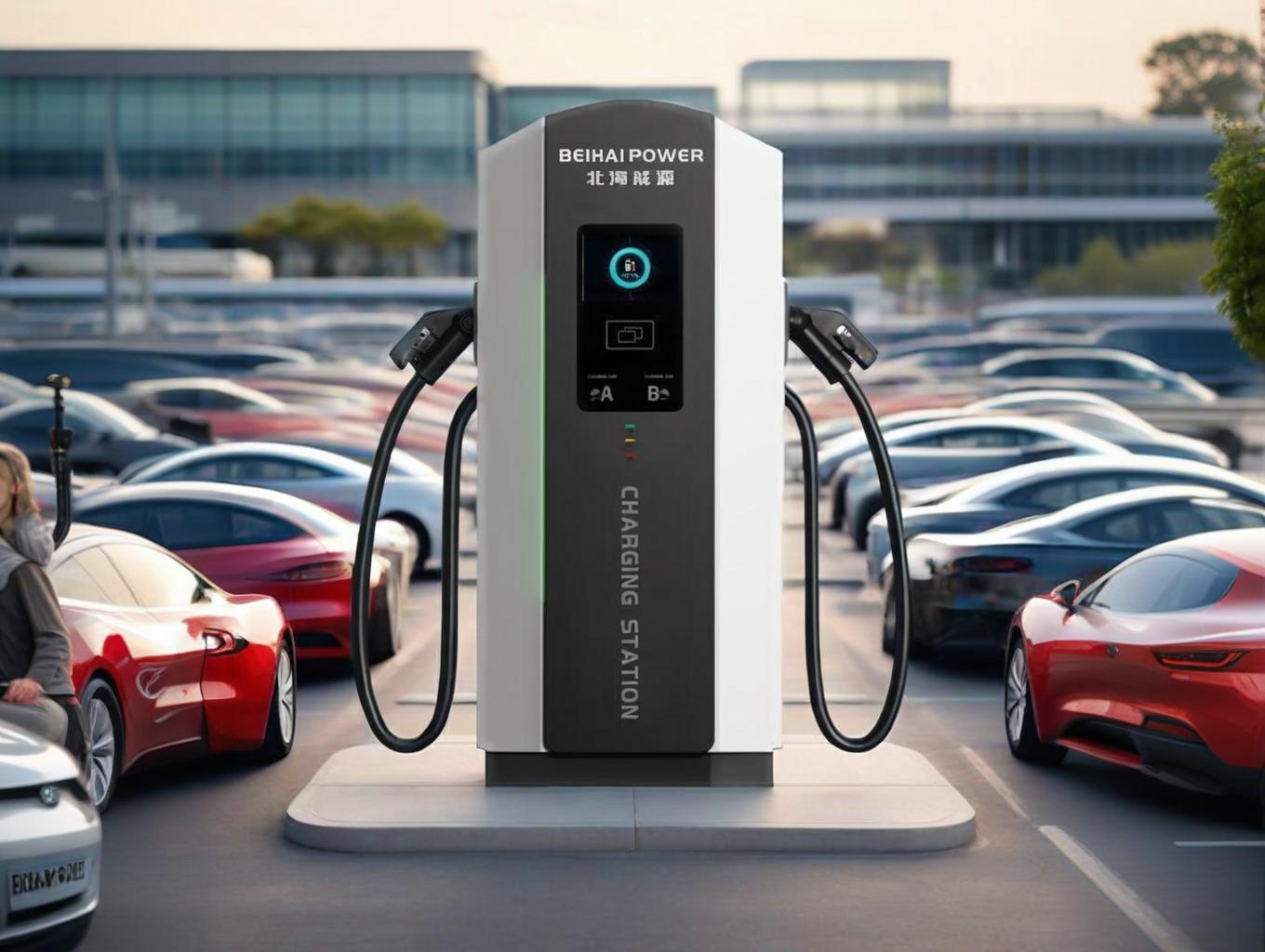“Why 7-inch touchscreens are becoming the ‘new standard’ for EV charging piles? An in-depth analysis of the user experience upgrade behind the interaction revolution.”
–From “function machine” to “intelligent terminal”, How a Simple Screen is Redefining the Future of EV Charging Infrastructure?
Introduction: A User Complaint That Sparked an Industry Reflection
“A charging station without a touchscreen is like a car without a steering wheel!” This viral complaint from a Tesla owner on social media has ignited a heated debate. As global EV adoption surpasses 18% (BloombergNEF 2023 data), the user experience of charging stations has become a critical pain point. This blog compares 7-inch touchscreen-equipped charging stations with traditional non-screen models, revealing how smart interaction is reshaping the value chain of charging infrastructure.

Introduction: A User Complaint That Sparked an Industry Reflection
“A charging station without a touchscreen is like a car without a steering wheel!” This viral complaint from a Tesla owner on social media has ignited a heated debate. As global EV adoption surpasses 18% (BloombergNEF 2023 data), the user experience of charging stations has become a critical pain point. This blog compares 7-inch touchscreen-equipped charging stations with traditional non-screen models, revealing how smart interaction is reshaping the value chain of electric car charger.
Part 1: The “Four Primitive Pain Points” of Non-Screen Charging Stations
1. Safety Hazards in the Era of Blind Operation
- Case Comparison:
- Non-Screen Chargers: Users rely on mobile apps or physical buttons, which can lead to accidental emergency stops in wet conditions (31% of such incidents reported by a European operator in 2022).
- 7-Inch Touchscreen Chargers: Visual confirmation through swipe-to-start protocols (e.g., Tesla V4 Supercharger logic) reduces accidents by 76%.
2. Trust Crisis Caused by Data Black Boxes
- Industry Survey: J.D. Power’s 2023 Charging Satisfaction Report found that 67% of users are dissatisfied with the lack of real-time charging power display. Non-screen devices rely on delayed mobile app data (typically 2-5 minutes), while touchscreens provide real-time voltage/current monitoring, eliminating “charging anxiety.”
3. The Natural Flaw in Business Models
- Operational Cost Analysis: Traditional QR code payments require additional maintenance for scanning modules (annual repair costs of $120 per unit), while integrated touchscreen systems with NFC/facial recognition (e.g., a Shenzhen charging station case) increase per-unit revenue by 40%.
4. The Efficiency Gap in Maintenance
- Field Test: Technicians spend an average of 23 minutes diagnosing faults on non-screen chargers (requiring laptop connections to read logs), while touchscreen chargers display error codes directly, improving repair efficiency by 300%.
Part 2: The “Five Revolutionary Values” of 7-Inch Touchscreens
1. Human-Machine Interaction Revolution: From “Feature Phones” to “Smart Terminals”
- Core Function Matrix:
- Charging Navigation: Built-in maps show nearby available chargers (compatible with Apple CarPlay/Android Auto).
- Multi-Standard Adaptation: Automatically identifies CCS1/CCS2/GB/T connectors and guides plug-in operations (inspired by ABB Terra AC wallbox design).
- Energy Consumption Reports: Generates monthly charging efficiency graphs and optimizes off-peak usage for home charging.
2. The Super Gateway for Commercial Ecosystems
- Scenario-Based Service Cases:
- A Beijing charging station promoted “Free Car Wash with $7 Charging” via the touchscreen, achieving a 38% conversion rate.
- Germany’s IONITY network integrated ad systems into screens, generating over $2000 annual ad revenue per unit.
3. The Smart Gateway for Power Systems
- V2G (Vehicle-to-Grid) Practice: Screens display real-time grid load status, allowing users to set “reverse power supply” thresholds (Octopus Energy’s UK trial saw a 5x increase in user participation).
4. The Ultimate Line of Defense for Safety
- AI Vision System: Through screen cameras:
- AI monitors plug-in status (reducing 80% of mechanical lock failures).
- Alerts for children entering restricted areas (complying with UL 2594 regulations).
5. Software-Defined Hardware Iteration
- OTA Upgrade Example: A Chinese brand pushed a ChaoJi protocol update via the touchscreen, enabling 2019 models to support the latest 900kW ultra-fast charging standard.
Part 3: The “Three-Tier Market Penetration Effect” of Touchscreen Chargers
1. For End Users: From “Enduring” to “Enjoying”
- Behavioral Study: MIT research shows touchscreen interaction reduces perceived charging wait time by 47% (thanks to video/news features).
2. For Operators: From “Cost Center” to “Profit Center”
- Financial Model Comparison:
Metric Non-Screen Charger (5-Year Cycle) Touchscreen Charger (5-Year Cycle) Revenue/Unit $18,000 $27,000 (+50%) Maintenance Cost $3,500 $1,800 (-49%) User Retention 61% 89%
3. For Governments: A Digital Tool for Carbon Neutrality Goals
- Shanghai Pilot Project: Real-time carbon footprint data collected via charging station screens is integrated into the city’s carbon trading platform, allowing users to redeem charging credits.
Part 4: Industry Trends: Strategic Moves by Global Standard-Setters
- EU CE Regulations: Mandatory ≥5-inch screens for public chargers starting in 2025.
- China GB/T Draft Revision: Requires slow chargers to display charging protocols visually.
- Tesla’s Patent Insight: Leaked V4 Supercharger designs show screen size upgraded from 5 to 8 inches.
Conclusion: When Charging Stations Become the “Fourth Screen”
From mechanical knobs to touch interactions, this revolution led by 7-inch screens is redefining the relationship between humans, vehicles, and energy. Choosing a touchscreen-equipped charging station isn’t just about faster energy replenishment—it’s about entering the era of “vehicle-grid-road-cloud” integration. Manufacturers still producing “blind operation” devices may be repeating Nokia’s mistakes in the smartphone era.
Data Sources:
- BloombergNEF’s 2023 Global Charging Infrastructure Report
- China Electric Vehicle Charging Infrastructure Promotion Alliance (EVCIPA) Whitepaper
- UL 2594:2023 Safety Standard for EV Supply Equipment
Further Reading:
- From Smartphones to Smart Charging: How Interaction Design is Defining New Infrastructure
- Tesla V4 Supercharger Teardown: The Ecosystem Ambition Behind the Screen
Post time: Feb-26-2025




